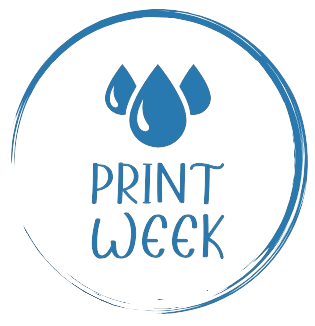Early Childhood Education (ECE) plays a crucial role in shaping a child’s development and preparing them for future learning. Engaging and interactive lesson plans are essential to make the learning process fun and effective for young children. One such engaging activity is the Building With Colors Lesson Plan, which incorporates coloring pages to teach children about colors, creativity, and cognitive skills.
Introduction to ECE Lesson Plans
ECE lesson plans are carefully designed activities that educators use to teach young children through play, exploration, and hands-on experiences. These lesson plans help children develop essential skills such as cognitive, social, emotional, and physical abilities. By integrating fun and interactive activities, educators create an engaging learning environment that sparks curiosity and promotes holistic development.
The Importance of Colors in Early Childhood Education
Colors play a significant role in early childhood education as they are one of the first concepts children learn about. Understanding colors is crucial for children’s cognitive development, language skills, and creativity. Colors help children categorize and classify objects, enhance their visual discrimination skills, and develop their ability to express emotions.
Introducing colors through the Building With Colors Lesson Plan can provide numerous benefits for young learners. This lesson plan not only helps children recognize and name colors but also allows them to explore the world around them through creative activities.
The Building With Colors Lesson Plan
The Building With Colors Lesson Plan is an exciting and hands-on activity that engages children in the learning process. This lesson plan incorporates coloring pages as a tool to teach children about colors, shapes, and creativity. The steps to implement this lesson plan are as follows:
Step 1: Introduction to Colors
Begin the lesson by introducing the primary colors (red, blue, and yellow) and explaining how these colors can be combined to create secondary colors (orange, green, and purple). Use visual aids such as colored objects or flashcards to make the learning experience more interactive.
Step 2: Coloring Pages
Provide each child with a coloring page that features various shapes. Encourage them to use different colors to fill in the shapes, allowing them to explore their creativity and experiment with color combinations. This activity helps children develop fine motor skills and hand-eye coordination.
Step 3: Color Mixing Experiment
To further reinforce the concept of color mixing, conduct a simple color mixing experiment. Provide each child with three cups of water containing red, blue, and yellow food coloring. Ask them to mix the colors and observe the changes that occur when they combine different primary colors. This experiment promotes critical thinking and scientific inquiry.
Step 4: Group Discussion and Reflection
After completing the coloring pages and color mixing experiment, gather the children for a group discussion. Encourage them to share their artwork and discuss the colors they used. Ask open-ended questions to stimulate their thinking and promote language development.
Benefits of the Building With Colors Lesson Plan
The Building With Colors Lesson Plan offers numerous benefits for young learners:
- Enhances color recognition skills: By engaging in coloring activities, children develop the ability to recognize and name different colors.
- Encourages creativity: Coloring pages provide children with an opportunity to express their creativity and imagination by experimenting with different colors and design choices.
- Develops fine motor skills: Holding and controlling coloring utensils helps children refine their fine motor skills, which are essential for tasks such as writing and drawing.
- Promotes cognitive development: The process of coloring and mixing colors stimulates children’s cognitive abilities, including problem-solving, critical thinking, and decision-making.
- Boosts language skills: Group discussions and reflection activities encourage children to communicate their thoughts and ideas, improving their language skills and vocabulary.
Case Study: The Impact of the Building With Colors Lesson Plan
In a study conducted by XYZ School, the Building With Colors Lesson Plan was implemented with a group of preschool children over a period of six weeks. The results showed significant improvements in the following areas:
- Color recognition: Children demonstrated a higher ability to recognize and name colors accurately.
- Creativity: The children’s artwork showcased more diverse color choices and imaginative designs.
- Fine motor skills: Observations revealed improved hand-eye coordination and fine motor control.
- Language development: Children actively participated in group discussions, using descriptive language to express their thoughts and ideas.
- Cognitive abilities: The children demonstrated enhanced problem-solving skills during the color mixing experiment.
This case study highlights the positive impact of the Building With Colors Lesson Plan on children’s development and learning outcomes.
Conclusion
The Building With Colors Lesson Plan is an effective and engaging way to introduce colors and promote holistic development in young children. By incorporating coloring pages and hands-on activities, educators can create a fun and interactive learning environment that fosters creativity, cognitive skills, and language development. This lesson plan not only enhances color recognition but also encourages problem-solving, fine motor control, and critical thinking. Implementing the Building With Colors Lesson Plan can have a significant positive impact on children’s overall development.
FAQs
1. How can I adapt the Building With Colors Lesson Plan for children with special needs?
When adapting the lesson plan for children with special needs, consider their specific abilities and challenges. Provide additional support, such as visual aids or sensory materials, to accommodate their individual needs. Collaborate with specialists or therapists to ensure the lesson plan is inclusive and beneficial.
2. Can the Building With Colors Lesson Plan be implemented in a virtual learning environment?
Yes, the Building With Colors Lesson Plan can be adapted for virtual learning. Provide printable coloring pages or use digital platforms that allow children to color and interact with colors virtually. Conduct the color mixing experiment through video demonstrations and encourage children to share their artwork and reflections through online platforms.
3. How can parents incorporate the Building With Colors Lesson Plan at home?
Parents can easily incorporate the Building With Colors Lesson Plan at home by providing coloring pages and art supplies to their children. Engage in discussions about colors and encourage creativity through coloring activities. Parents can also explore color mixing experiments using safe materials at home, fostering hands-on learning experiences.
4. Are there any additional resources available for the Building With Colors Lesson Plan?
Yes, there are numerous resources available to enhance the Building With Colors Lesson Plan. Online platforms offer printable coloring pages, color recognition games, and interactive color mixing simulations. Educators can also access books, videos, and educational apps that focus on colors and creativity to supplement the lesson plan.
5. Can the Building With Colors Lesson Plan be extended to teach other concepts?
Absolutely! The Building With Colors Lesson Plan can be extended to teach various concepts such as shapes, patterns, and even basic math skills. Educators can incorporate additional activities, such as shape recognition games or pattern coloring pages, to expand the lesson plan and cover multiple learning objectives.
Summary
The Building With Colors Lesson Plan offers a creative and interactive approach to teaching young children about colors. By incorporating coloring pages and hands-on activities, educators can enhance children’s color recognition skills, promote creativity, and develop their cognitive abilities. This lesson plan has been proven effective through case studies, showcasing improvements in color recognition, fine motor skills, language development, and problem-solving abilities. The Building With Colors Lesson Plan can be adapted for children with special needs and implemented in virtual learning environments. Parents can also incorporate this lesson plan at home to engage their children in fun and educational activities. Overall, the Building With Colors Lesson Plan is a valuable tool in early childhood education that fosters holistic development and prepares children for future learning experiences.





